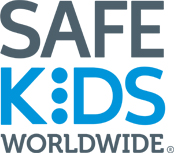You are here
Kids In Autonomous Vehicles Call to Action
Call to Action on Children in Autonomous Vehicles
The Blue Ribbon Panel on Children in Autonomous Vehicles is calling on developers of autonomous vehicles (AVs) to ensure that AVs are engineered, deployed and marketed to protect the unique needs of child passengers. Developers are broadly defined to include original equipment manufacturers, non-original equipment manufacturers, as well as designers of component systems such as LIDAR, chip or satellite manufacturers, and others building key components of AVs.
AVs must be developed, regulations upgraded and laws passed to ensure children will be properly restrained, have the highest level of protection in a crash, and can be appropriately supervised during a trip. This panel believes it is imperative that minor children never be transported without appropriate supervision by a parent, guardian or caregiver until best practices are adopted.
We’re asking developers to commit to the following actions:
1. Safety standards. Support modifications to the federal motor vehicle safety standards (FMVSS) that ensure child safety systems can be used consistently as children are transported between vehicles at various stages of automation. Provide standardized plain language/pictograms for consumers who transport child occupants using adaptive, add-on or integrated equipment. Recognize that changes to the vehicle cabin design may significantly impact child passenger safety restraints and testing protocols now conducted only in a forward- facing vehicle seat orientation.
2. Usability testing. Conduct or sponsor usability testing that includes families transporting more than one child and considers the needs of children at different ages and developmental stages in tests of all new features in AVs.
We know that adults are being included in usability tests, including AV pilot programs currently underway in cities across the United States. However, it is not clear if children are included in this testing. Developers should conduct or sponsor testing and be transparent with the public to build confidence in the fidelity of the testing process. Transparency, part of the National Highway Traffic Safety Administration’s original policy framework on automated vehicles, should be considered a valuable part of the entire safety system that evokes confidence among passengers.
- Promote usability testing that evaluates:
- Families of young children of varying ages and various restraint needs.
- Families or caregivers that transport more than one child.
- The multiple needs of children with developmental and physical disabilities.
- Child-specific needs with new features and alternative seating configurations that may affect FMVSS.
- Child interaction with vehicle features in circumstances with inadequate adult supervision due to an impaired, incapacitated or absent adult. Testing should include communicating with adults outside of the vehicle to understand how children would interact with AVs in situations where an adult passenger has become incapacitated, e.g. due to a medical emergency.
3. Inclusive design. Seek input of child passenger safety experts throughout AV product development and design to ensure the safety needs of children at all stages and ages are accommodated and there are no unintended adverse consequences. Ensure that child-centered best practice recommendations are considered and evolve as each new advancing automated feature is developed. Having the child safety community at the table during the development and innovation stages rather than after vehicles and features are in production will decrease risks and enhance child safety. Safe Kids Worldwide and other child-focused experts on this panel are well positioned to provide input from child safety advocates and experts in this effort.
4. Appropriate supervision. Conduct research that informs best practices and policy recommendations regarding the appropriate level of supervision for children of different ages and developmental stages in AVs assuring enhanced safety simultaneously with innovation.
Current vehicles and laws require an alert driver to operate a vehicle with child passengers. As vehicles transition to driverless technology, research is needed to identify the appropriate level of adult supervision to ensure the safety of children when the potential exists for no parent/caregiver to be present or alert in the vehicle. Scenarios might include children who unbuckle themselves or other children, or bored children who play unsafely with unused seat belts. Furthermore, there is a need to develop best practices around the appropriate age at which a child can ride alone in an AV. At a minimum, these efforts should consider the possibilities of the following scenarios. What if:
- No one is there to meet the child at the AV destination?
- The AV breaks down or is re-routed to an unknown location?
- The child cannot communicate a problem with the AV?
- The child becomes ill or injured?
- One child attempts to leave the vehicle before arriving at a programmed location set for all passengers?
- A supervising adult in the vehicle is sleeping or impaired?
- There is a crash?
5. Marketing standards. Ensure all marketing and advertising shows families riding in AVs according to best practices.
Product developers are in a unique position of communicating and modeling safe behaviors in relation to their products. Today, vehicle manufacturers have high standards that show proper restraint of children in their marketing and advertising. But it wasn’t always this way. Two decades ago, a Blue Ribbon Panel on Vehicle and Child Restraint Incompatibility urged manufacturers to always show children in the correct restraint for their age and size and properly restrained according to best practice in their advertising campaigns. Advocates worked with the industry for years to achieve this progress. As product developers market exciting new AV technologies, their advertising agencies and dealer sales staff will be eager to show the future of transportation. We want to ensure they consistently model safe transport of children at every juncture.
